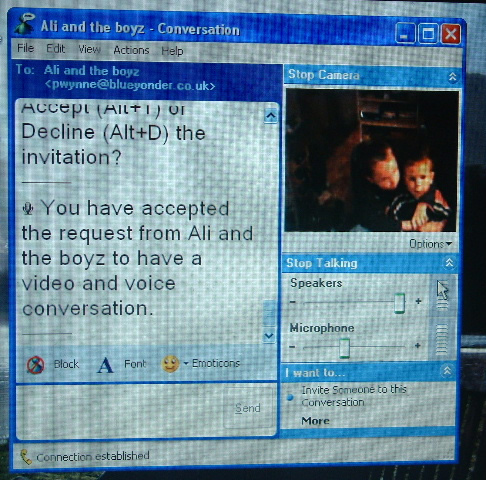

Information Systems : 12 Credits

Overview
To understand the benefits of technology requires familiarity with network
systems, platforms, and data structures. My coursework in Information
and Software Engineering provided the practical knowledge required to
be able to use technology, while remaining mindful of its limitations.
Course Number |
Course Name |
Credits |
Completion Date |
| INFS 590 | Program Design and Data Structures | 3 |
Fall 2003 |
| INFS 612 | Data Communication & Distr. Process | 3 |
Spring 2003 |
| INFS 622 | Information Systems Analysis & Design | 3 |
Fall 2003 |
| INFS 640 | Introduction to E-Commerce | 3 |
Spring 2004 |
INFS 590:
Program Design and Data Structures
To make the most of technology, organizations need to have the freedom
to choose among a variety of products without being tied to proprietary
platforms and programs. One of the earliest enablers of technology interoperability
was the Java programming language. With only a rudimentary programming
background, learning Java was rather a daunting task. Unlike older languages
like Cobol or Basic, Java is extremely flexible, with multiple means of
achieving a desired result. To ease the pain, I joined the Sun New
to Java developers' listserv for free tips and techniques, although
no two programmers provided the same answer to a single question. Nevertheless,
I survived this basic introduction to Java and now have a newfound respect
for those whose greatest pleasure is punching out hundreds of lines of
code a day just because they can.Top
INFS 612: Data Communication
and Distribution Process
The heart of an organization's infrastructure is its network.
Concepts such as packet switching, transfer rate, and performance under
load became real when I had to design and program two Web
servers: One server without security and one with security. The need
for server security was particularly real given the news stories about
hackers and denial-of-service attacks on retail Web sites like Amazon.com.
But what I learned most from this course was that the design of content
- including instructional content - must take into account server capacity
and network bandwidth. What good is exciting multimedia courseware that
slows server speed to a crawl or brings down the network on a regular
basis? Anyone incorporating technology into instruction needs to have
some knowledge of the impact of the electronic content on server performance.
Top
INFS 622:
Information Systems Analysis and Design
The old adage about experience being the greatest teacher is certainly
true when it comes to building information systems. Until I actually had
to design and build an information system, I had know real understanding
of the scope and complexity of such projects. To get a real taste of what
is involved in integrating diverse systems, the project I chose for this
course was to take existing off-the-shelf technology and construct a medical
information system for relatives and friends of home-bound, semi-ambulatory
patients which I named Constant
Companion. Although this may seem a far cry from my focus of instructional
and administrative technology convergence, the process used to design
and develop this system is the same process that is (should be) used when
integrating instructional and administrative systems at an institutions.
I had to assess the specific needs, identify the personas using the system,
articulate user expectations, then translate all of these into a series
of technical requirements and system specifications, including contingencies
and risks. In addition to experiencing what it takes to build systems,
I also learned that it is not always a question of build versus buy, but
that a combination of both can create a system that satisfies an institution's
needs and still provide the benefits of vendor support services. That's
a solid lesson for those who state that the only way to integrate technology
into instruction is to build everything from scratch. Top
INFS 640:
Introduction to E-Commerce
Once upon a time, e-commerce described how business transactions were
conducted over the Internet in a business-to-consumer (B2C) model like
Amazon.com or a business-to-business (B2B) model like eSteel.com. As Internet
technology became more pervasive and institutions of higher education
began adopting e-commerce to collect tuition and other fees from students
and vendors, that e-commerce infrastructure was used across the entire
enterprise. Even course management systems (CMS) and educational portals
have e-commerce engines that allow students to pay for course materials
and other learning aids without ever logging out of the course environment.
The subsequent controversy over shared music files on campus networks
further demonstrates the spread of e-commerce beyond the borders of business.
In other words, e-commerce is an outcome of the convergence of technologies.
Consistent with my focus on the synergy between academic and administrative
technologies, I co-authored a paper and presentation on the impact of
digital media in e-commerce
on the evolving e-learning industry as an example of that synergy. The
Top
